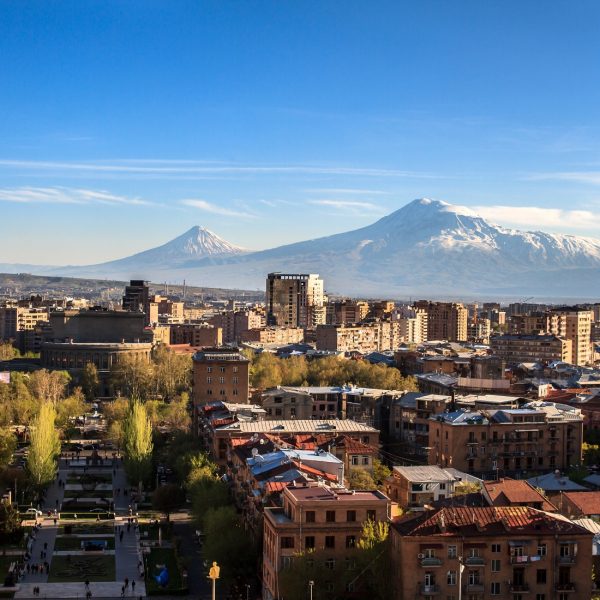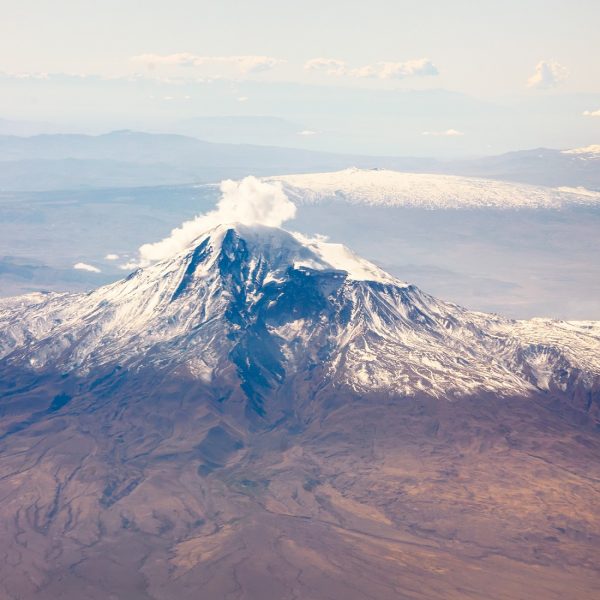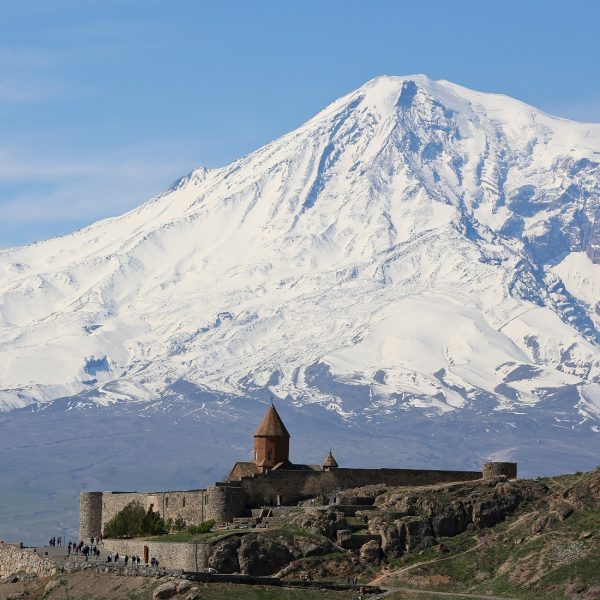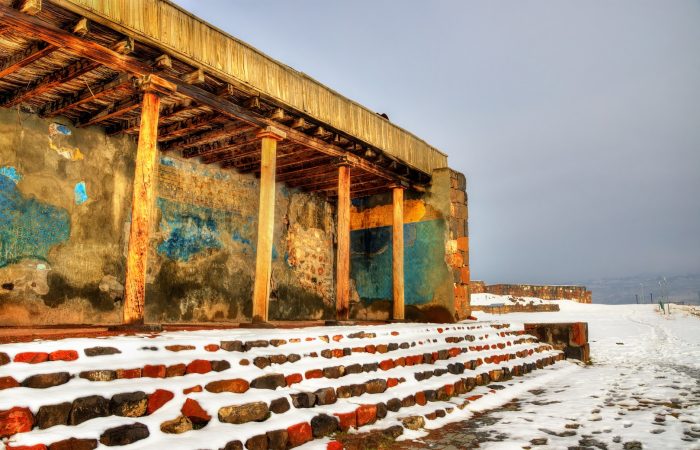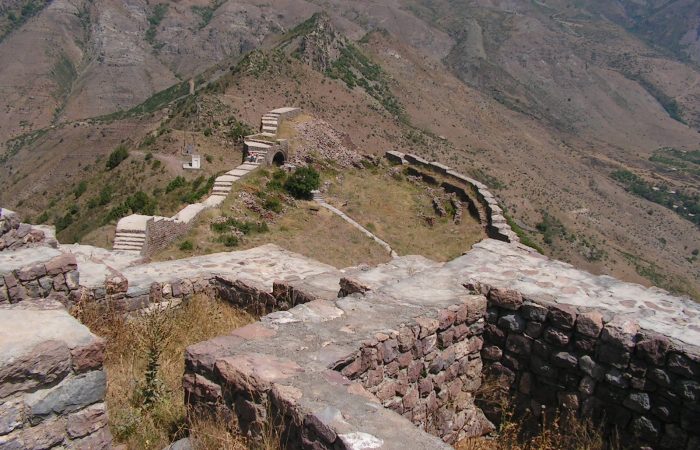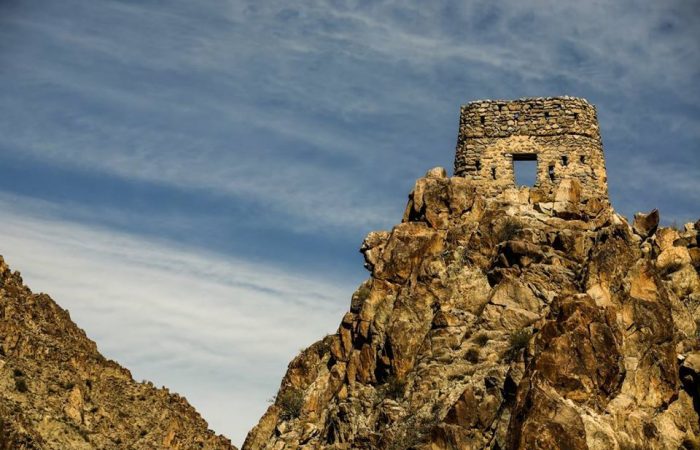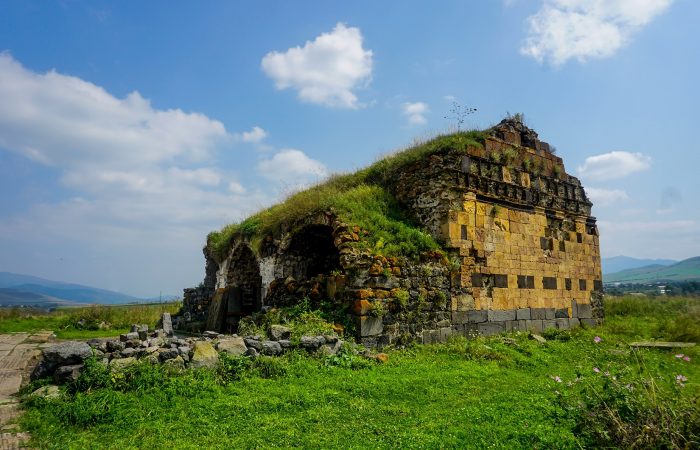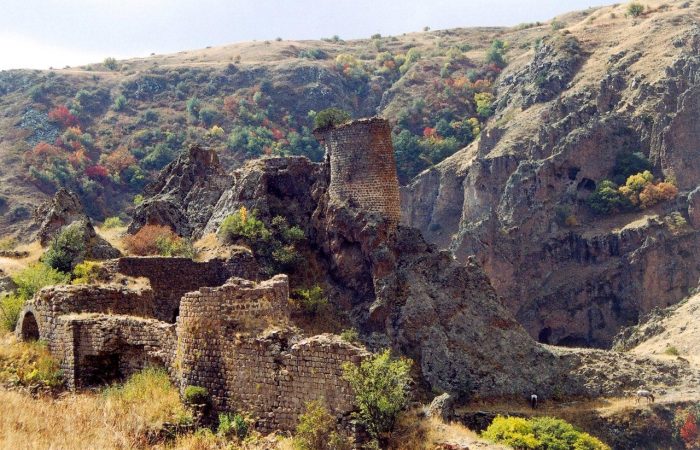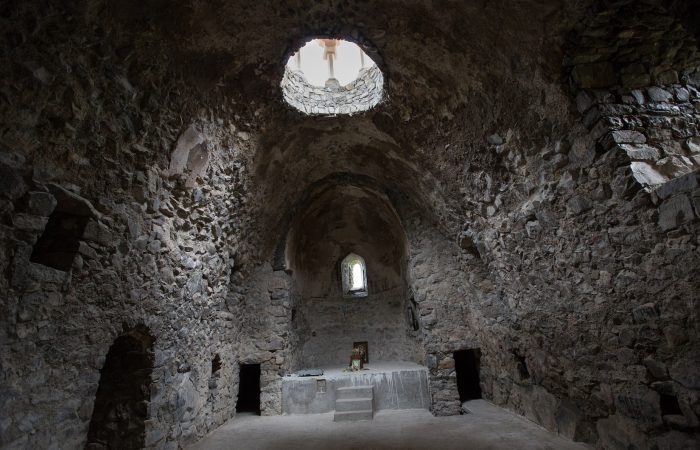Mount Ararat: General and Location
Referred to as the sacred mountain of Armenians and being regarded as the dream and the image of their soul snow-capped Mount Ararat is an inactive volcanic mountain, which proudly rises with its two conical peaks in the Armenian Highland.
Mount Ararat is the highest mountain of historical Armenia with the highest peak coming at the height of 5165 meters and the lowest at the height of 3925 meters above sea level. The higher top is Masis, and the lowest is Sis. The mountain is currently in the territory of Turkey, more precisely in Eastern Turkey’s Eastern Anatolia Region; 32 kilometers from the Armenian border.
It is notable that after the first Democratic Republic of Armenia was established in 1918, it came to be known as Ararat Republic as well. The territory in which Mount Ararat is presently located passed under the rule of Turkey in 1921 based on the disputable agreements of Moscow and Kars; that is after Armenia became a Soviet Union member state (November 29, 1920).
Mount Ararat: Name and Etymology
Ararat is the newer Armenian name of Urartu. The name was mentioned in Hebrew Torah written by Moses. It included the consonants “rrt,” which was replaced with “Ararat” in later translated versions of Bible.
Another explanation is the mountain was named Ararat after King Ara the Handsome. In Judeo-Christian tradition Mount Ararat is associated with the “Mountains of Ararat” on which Noah’s Ark came to rest. It should be noted that Bible does not refer to any specific mountain but to a range of mountains within the region of Ararat. The region’s name came from Urartu, an ancient Armenian Kingdom.
Mount Ararat: Masis or Greater Ararat
Majestic Masis has a rocky peak. There is a gorge on the north-eastern slope of the mountain. It’s known as “Maseats abyss” and stretches from the top to the bottom. The base part is dome like with moderately inclined slopes.
Mount Ararat: Sis or Lesser Ararat
Sis or Lesser Ararat is a regular conical mountain. The top part represents a plain covered with rocks and heaps of stones. The slopes are rather separated. Unlike Masis, Sis lacks eternal snow and glaciers.
Mount Ararat: Climate and When to Climb
The weather is rather well expressed on the mountain. The winters are usually very cold with a strong snowpack. The weather is generally dry. The average temperature in January might reach (-5) degrees Celsius on the bottom and (-25) degrees Celsius on the top, and in July it might reach 26 degrees Celsius on the bottom and up to 0 or lower degrees Celsius on the top.
The best time to climb the mountain is the period from July to September.
Mount Ararat: Things to Know
Mount Ararat, Masis and Sis – This is what causes great confusion among visitors and people who are interested in the mountain. To put is simply, Masis and Sis are the two peaks/summits of Mount Ararat.
Mount Ararat and Noah’s Ark – According to Bible, God decided to flood the Earth after seeing how corrupt it had become. But there was Noah who truly believed in God, and God told him to build an ark and fill it with two of every animal species. After the waters receded, the ark came to rest on a mountain, which is believed to be Mount Ararat.
Back in 2010 the world was simply shaken after a group of Chinese and Turkish evangelical explorers said they had found the remains of Noah’s Ark on Mount Ararat. The age the explorers assigned to the relics is 4800 years. If the relics are really 4800 years old, then it coincides with the time the ark is thought to be afloat. And if all this is correct and the explorers were not being mistaken assuring that the relics found on the mountain for 99.9 percent belong to the Ark, then it means that the history of post-flood humanity has started from exactly Mount Ararat.
Mount Ararat Eruption – It is not clear when exactly the mountain last erupted; at least there is no any large-scale activity recorded. In all possibility, the mountain was rather active in the third millennium BC. Remains of human bodies as well as artifacts dating to the Bronze Age were discovered under the pyroclastic flows.
All this said it has to be noted that the mountain is believed to have erupted in 1840. Learn about it below.
Mount Ararat Earthquake – A magnitude 7.4 earthquake occurred at Mount Ararat on July 2, 1840. Villages around the mountain were destroyed and around 10,000 people were killed. The earthquake is thought to be accompanied by Bandai-type phreatic eruption. Debris flow was also noted during the eruption.
Climbers of Mount Ararat – The first attempt of climbing the mountain was made by hermit Hakob Mtsbinetsi whose ultimate goal was to see Noah’s Ark and to bring down a piece of relic from the ark. Nevertheless, the hermit got tired and fell asleep. It is believed that while Hakob was sleeping, God’s angel sent him a cruciform wood from the ark and a spring started flowing from the place the hermit fell asleep. The spring was named Hakoba spring meaning Hakob’s spring.
In 1829 prominent Armenian writer Khachatur Abovyan climbed Mount Ararat with Dorpat University professor Friedrich Parrot. After reaching the peak Abovyan dug a hole in the ice and erected a wooden cross in it. He also took a piece of ice from there and put it in a bottle. Abovyan considered it holy. It was in October. Later in November they both climbed the Lesser Ararat (Sis).
In 1845 German mineralogist Otto Wilhelm Hermann climbed the mountain with Khachatur Abovyan. A year later (1846) Abovyan again climbed the mountain. This time he joined Englishman Henry Danby Seymour.
Climbing Mount Ararat – If you are impatient this mountain is not for you as the climb is really long. For people who are familiar with the use of axe and crampons there is an easy route. The route starts from the south and is more convenient during late summer. Note that the southern route is recommended because of the strong winds.
You will need a permit from the Turkish Government and a certified Turkish guide. The arrangements might take as long as two months. In this regard, it’s better to apply to a licensed Turkish travel agency. This way getting a climb permit will last shorter.
Mount Ararat’s Turkish Name – The Turkish name of the mountain is Agri Dagi (Agir Dag in modern Turkish). “Agri” means pain, so the Turkish naming means “Painful Mountain.”
Mount Ararat: The Mount in Art and Writing
The mountain has been the true love and muse of numerous Armenian artists and writers and therefore can be seen in the works of most talented Armenian painters and the poems of most prominent Armenian poets.
The mountain is depicted in over ten paintings of Armenian sea painter Hovhannes Aivazovsky the fame of which has been known to not only Armenians but also throughout the world. During one of the exhibitions held in Paris, the painter was asked to what extent the Armenian theme was displayed in his works. The answer was more than extraordinary. The painter approached his painting “Noah Descending from Ararat” and proudly said, “This is our Armenia.”
The mountain has found its expression in the poems of such writers as Yeghishe Charents, Hovhannes Shiraz, Paruyr Sevak, Gevorg Emin and Silva Kaputikyan. Those are not just another poem you might read; those are lines on which each word comes directly from the heart and expresses the love, sorrow, grief and faith towards the mountain.
Mount Ararat has also appeared in many legends, particularly in those related to Mount Aragats, in which they either appear as sisters or brothers. Another legend has it, that Armenian King Artavazd is chained the abyss of Mount Ararat and attempts to get out of there.
To sum up, this spectacular mountain can be seen from almost every corner of Armenia, including capital Yerevan. In many cases tourists especially those of Armenian descent usually give preference to those hotels from where they can greet their beloved sacred mountain upon waking up. But if you need a closer look at the mountain, then consider visiting Khor Virap Monastery from where the spectacular mountain will rise in its full beauty in front of you.

